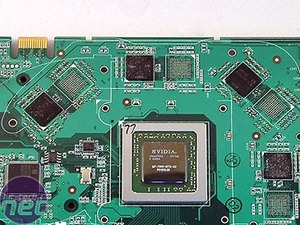Hardware - NVIDIA and ATI
What about the hardware? Well, we've already touched on some of the differences between ATI and NVIDIA. NVIDIA were quick to promote SM3.0 with the launch of their 6 series cards last year, and whilst we have had to wait for games to take advantage of the full capabilities, the time where it's now becoming a must-have for the hardcore gamer is almost here. Of course, ATI knew that all along, and whilst they've been stuck to the line that 2.x has been plenty good enough for the last year, they know that 3.0 is inevitable - hence why R520, their next-generation architecture, will certainly be fully 3.0 compliant.


The next year of hardware and shaders
There are differences of opinion as to how hardware is going to evolve as the shader architecture and specification continues to evolve. Crucially, the next DirectX specification, WGF, calls for a unified specification for pixel and vertex shaders, so that the two can be used interchangeably at a software level. Interviews and technology extrapolations suggest that ATI intends to unify the two at a hardware level too, to provide for a faster, sleeker, more streamlined rendering interface, and to prevent a situation - as we often get today - where vertex shaders are sitting, underloaded and twiddling their thumbs, whilst pixel shaders are working like crazy. The is also the approach of the Xbox 360. NVIDIA aren't keen on unifying shaders in hardware at the moment. Which company is right, we won't really know until Longhorn ships - and that could take a good long while yet, with its date still set for sometime, anytime, in 2006.Whatever happens with Longhorn, there is at least some stability for the next year. With both graphics companies supporting SM 3.0, and no prospect of another revision to the spec for at least another year, developers can finally focus their efforts on maximising the technology at their fingertips, rather than constantly scrabbling to work out what's coming next.

MSI MPG Velox 100R Chassis Review
October 14 2021 | 15:04










Want to comment? Please log in.